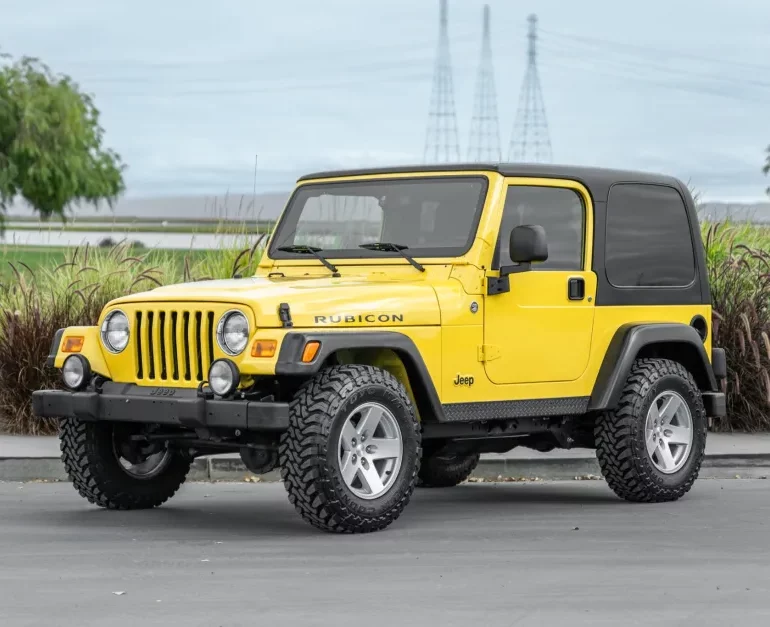The 2006 Jeep Wrangler: An In-Depth Exploration
The 2006 Jeep Wrangler, representing the final year of the TJ generation, encapsulates the rugged legacy and off-road prowess that have defined the Jeep brand for decades. This model year introduced notable refinements and updates, solidifying its status as a favorite among off-road enthusiasts and daily drivers alike. In this comprehensive analysis, we delve into the history, specifications, engine options, features, and overall impact of the 2006 Jeep Wrangler.
Historical Context
The Jeep Wrangler’s heritage dates back to the military Jeeps of World War II, with civilian models becoming iconic for their ruggedness and off-road capabilities. The TJ generation, introduced in 1997, marked a significant redesign from the YJ series, featuring round headlights, coil-spring suspension, and improved interior comfort. By 2006, the TJ Wrangler had firmly established itself as a robust and versatile vehicle, suitable for both adventurous trails and urban environments. The 2006 model year marks the end of the TJ era, making it a significant year in Jeep’s history.
Design and Styling
The 2006 Jeep Wrangler retained the distinctive design elements that define the Jeep brand:
- Round Headlights: A nod to the classic Jeep look, distinguishing the TJ from the YJ’s square headlights.
- Seven-Slot Grille: An instantly recognizable feature that is a hallmark of Jeep vehicles.
- Exposed Hinges: Contributing to the rugged, utilitarian aesthetic.
- Removable Doors and Fold-Down Windshield: Offering versatility and an open-air driving experience.
Engine and Performance
The 2006 Jeep Wrangler offered two reliable engine choices:
- 2.4-liter Inline-4: Producing 147 horsepower and 165 lb-ft of torque, replacing the older 2.5-liter engine. This engine was paired with a six-speed manual transmission, offering a balance of fuel efficiency and adequate power for light off-road use and daily driving.
- 4.0-liter Inline-6: Delivering 190 horsepower and 235 lb-ft of torque. Available with either a four-speed automatic or a six-speed manual transmission, this engine provided robust performance, making it ideal for more demanding off-road adventures and higher-speed on-road driving.
Suspension and Off-Road Capability
A key feature of the TJ generation, including the 2006 model, was the advanced suspension system:
- Quadra-Coil Suspension: Utilizing coil springs instead of leaf springs, this system significantly improved ride comfort and off-road capability.
- Solid Axles: Both front and rear, ensuring durability and strength for challenging terrains.
This setup allowed the 2006 Wrangler to excel in off-road environments, offering superior handling, stability, and articulation compared to its predecessors.
Interior and Features
The interior of the 2006 Wrangler was designed with practicality and durability in mind:
- Functional Layout: Simple, intuitive controls for ease of use.
- Durable Materials: Resistant to wear and easy to clean, suitable for outdoor adventures.
- Optional Air Conditioning: Enhancing comfort in hot climates.
- Basic Audio System: Including an AM/FM stereo, with options for a CD player and MP3 compatibility in higher trims.
Trim Levels
The 2006 Jeep Wrangler was available in multiple trim levels, catering to various preferences and needs:
- SE: The base model, equipped with the 2.4-liter engine and essential features.
- X: Offering a balance of affordability and performance with the 4.0-liter engine.
- Sport: Featuring the 4.0-liter engine and additional comfort and convenience features.
- Sahara: The top-tier model, offering body-colored fender flares, upgraded interior materials, and enhanced features for a more refined driving experience.
- Rubicon: Designed for serious off-road enthusiasts, featuring Dana 44 axles, Rock-Trac transfer case, and locking front and rear differentials.
Safety
Safety features in the 2006 Wrangler included:
- Driver and Passenger Airbags: Providing essential frontal impact protection.
- Anti-lock Brakes (ABS): Optional, enhancing braking performance in various conditions.
- Roll Bars: Integrated for rollover protection, crucial for a vehicle designed for off-road use.
Legacy and Impact
The 2006 Jeep Wrangler continued to build on the strengths of the TJ generation, reinforcing its reputation as a capable and reliable off-road vehicle. Its blend of classic Jeep design, dependable performance, and practical features made it a popular choice among Jeep enthusiasts and casual drivers alike. As the last model year of the TJ generation, the 2006 Wrangler holds a special place in Jeep history, representing the culmination of nearly a decade of continuous improvement and refinement.
Notable Changes for 2006
The 2006 model year introduced several important updates:
- Refined Interiors: Updates to materials and ergonomics for added comfort and durability.
- Expanded Options: More choices for audio systems and comfort features.
- New Colors: Additional paint options to appeal to a broader range of buyers.
Conclusion
The 2006 Jeep Wrangler upheld the tradition of ruggedness and versatility that has long been associated with the Jeep brand. Its consistent performance, iconic design, and practical features solidified its place in the Jeep lineup. The 2006 Wrangler remains a sought-after model for those seeking a dependable and capable off-road vehicle with a timeless design. Whether tackling challenging trails or navigating urban environments, the 2006 Jeep Wrangler continues to be a symbol of adventure and durability, and a fitting end to the celebrated TJ generation.

